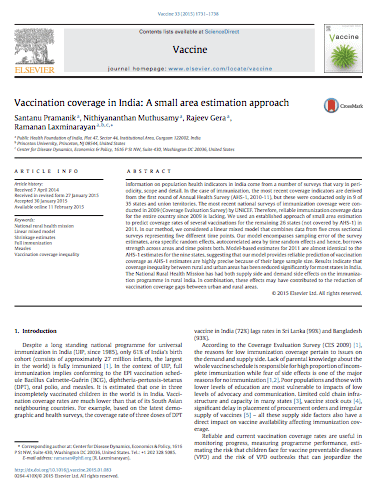June 30, 2015

The Question
How can the vaccination coverage rate be predicted for India (including the 26 Indian states that are not included in the Annual Health Survey)?
What we found
Our linear mixed model estimates for 2011 are almost identical to the AHS-1 (Annual Health Survey, 2010-11) estimates for the nine states, suggesting that our model provides reliable prediction of vaccination coverage. We can conclude this because AHS-1 estimates are highly precise due to their large sample size. Results also indicate that immunization coverage inequality between rural and urban areas persisted but has been reduced significantly for most states in India.
Why it matters
Reliable and current vaccination coverage rates are useful in monitoring progress, measuring program performance, estimating the risk of children face for a vaccine preventable disease and the risk VPDs can impose on disease prevention goals. In India, immunization coverage information is driven from 9 out of 35 states. The most recent vaccine coverage evaluation survey (of the entire country) was conducted in 2009. Thus, the need for reliable immunization coverage data that encompasses all the states of India is eminent.

